As his Sunday rest day drew to a close on 8 December 2013, Sakthivel Kumaravelu attempted to board the private bus that ferried workers from Singapore’s Little India to their dormitory in Jalan Papan on the western outskirts of the city. Tipsy and fractious from an afternoon fueled by the cafe-bars and liquor shops around the area, he was denied entry.
As the doors closed and the bus drove off without him, the 33-year-old construction worker sprinted down the rain-soaked streets, brandishing an umbrella at the fast-receding tail lights. It paused at Race Course Road, and Kumaravelu tried to mount the bus. He missed and fell under the vehicle’s heavy wheels.
Around forty minutes later, his crushed body was extricated by police officers.
Within minutes, Kuramvelu’s death had lit a fuse. Onlookers spread the word and soon around 400 members of the country’s migrant community flooded the streets in furious protest. Two days before International Migrants Day, various dialects mixed with the sound of splintering glass as the streets of Little India glowed orange with the searing heat of burning cars.
The Little India Riots injured 62 people and went down in history as Singapore’s worst case of public violence in decades. In the wake of the protests’ ninth anniversary, and new government announcements around working conditions, experts warn migrant communities still face restrictions in the name of maintaining social order and face exploitation due to their precarious employment status and profiteering employers.
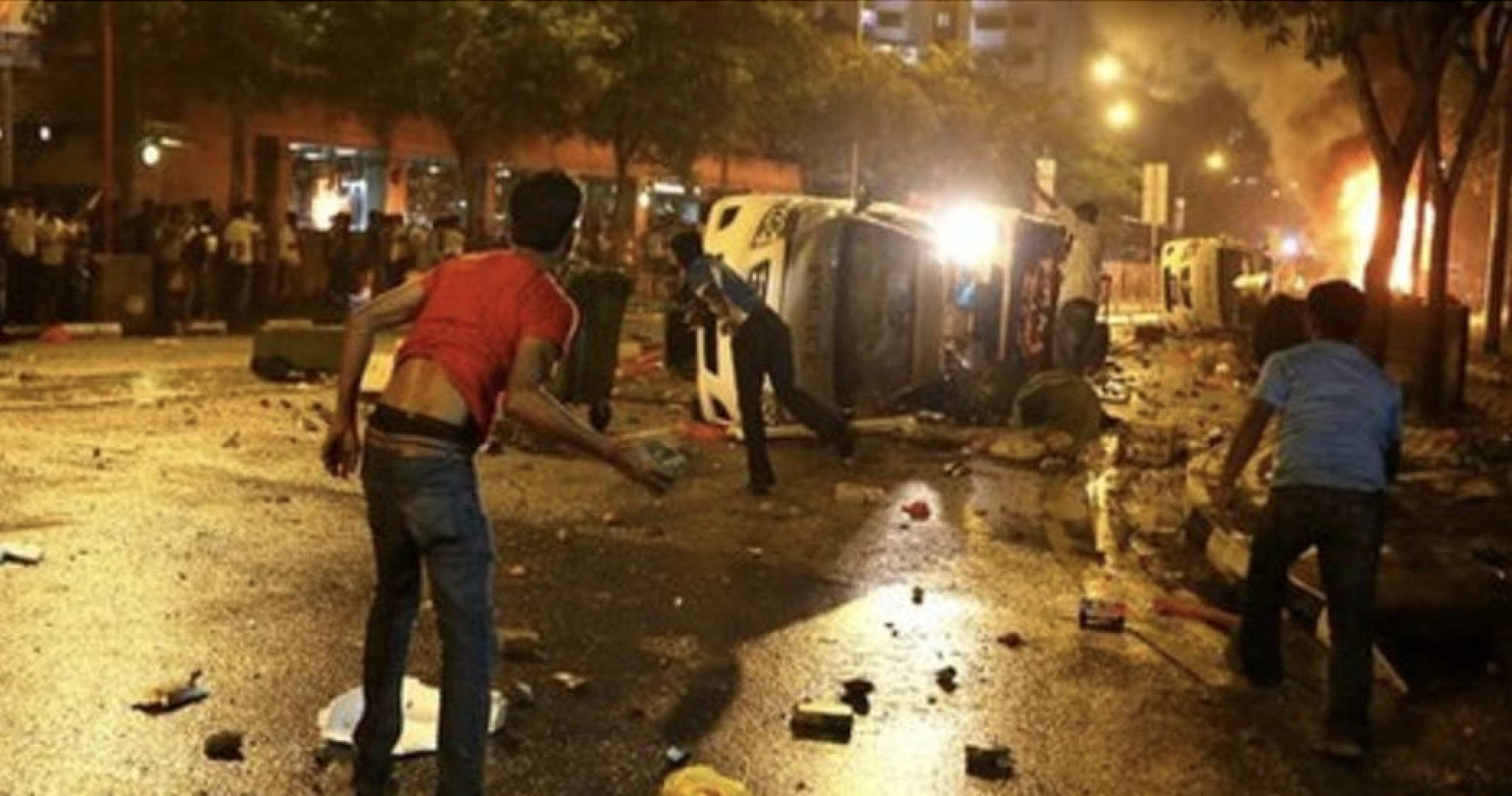
The 1.2 million migrant workers currently in Singapore make up around 38% of the workforce. Hailing primarily from Bangladesh, India and China, they work predominantly in the country’s low-wage sectors such as domestic help, marine repair and construction.
Often reliant on an employer-sponsored temporary work visa to remain in Singapore, they live in constant uncertainty, at risk of deportation.
When A.K. Mohsin, the editor-in-chief of Banglar Kantha, the country’s only Bengali language newspaper, heard the shouting and police sirens of the 2013 riots from his nearby office, his first fear was for the future of migrant workers’ right to work.
“I was thinking this is very dangerous for our migrant worker community, harmful for our… job market,” he told the Globe.
Mohsin’s concerns were not totally unfounded. A Committee of Inquiry (COI) released six months after the riots resulted in 57 migrant workers deported and banned permanently from Singapore. A further 213 were issued warnings and briefed on Singapore’s laws and zero-tolerance policy on rioting.
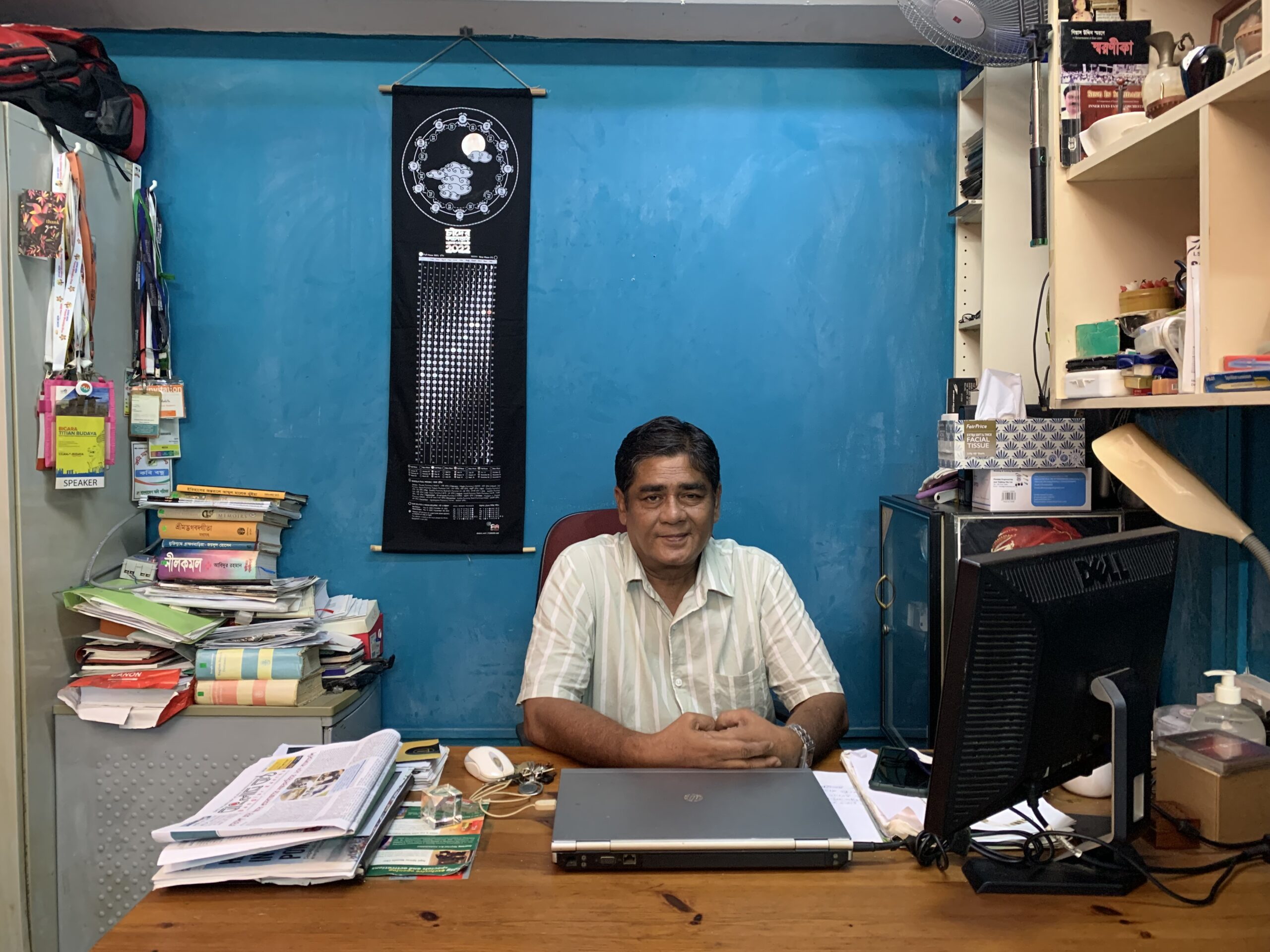
Intoxication was blamed as a contributing factor for both Kumaravelu’s fall and the ensuing violence. A year after the COI, the 2015 Liquor Control Bill marked Little India and nearby Geylang as designated “Liquor Control Zones,” prohibiting the consumption of alcohol from 07.30am Saturday – 07.30am Monday. An island-wide 10.30 curfew on alcohol consumption outside a licensed establishment was also introduced.
But for migrant workers, the biggest change was the clampdown on their freedom of movement. For a period of about a year afterwards, Mohsin recalls, migrants were banned from entering the Little India zone.
“All the remittance centres were based in the Little India area,” he explained. “They don’t come, how do they send money to their families? There was a lot of stress at that time.”
Following the riots, concerted government-backed efforts were made to encourage migrant communities to stay in their local areas. The first of nine “mega-dormitories,” a colossal 16,800-bed facility, with integrated mini-mart, beer garden and cinema, was opened in Tuas, an industrial west district, in August 2014.
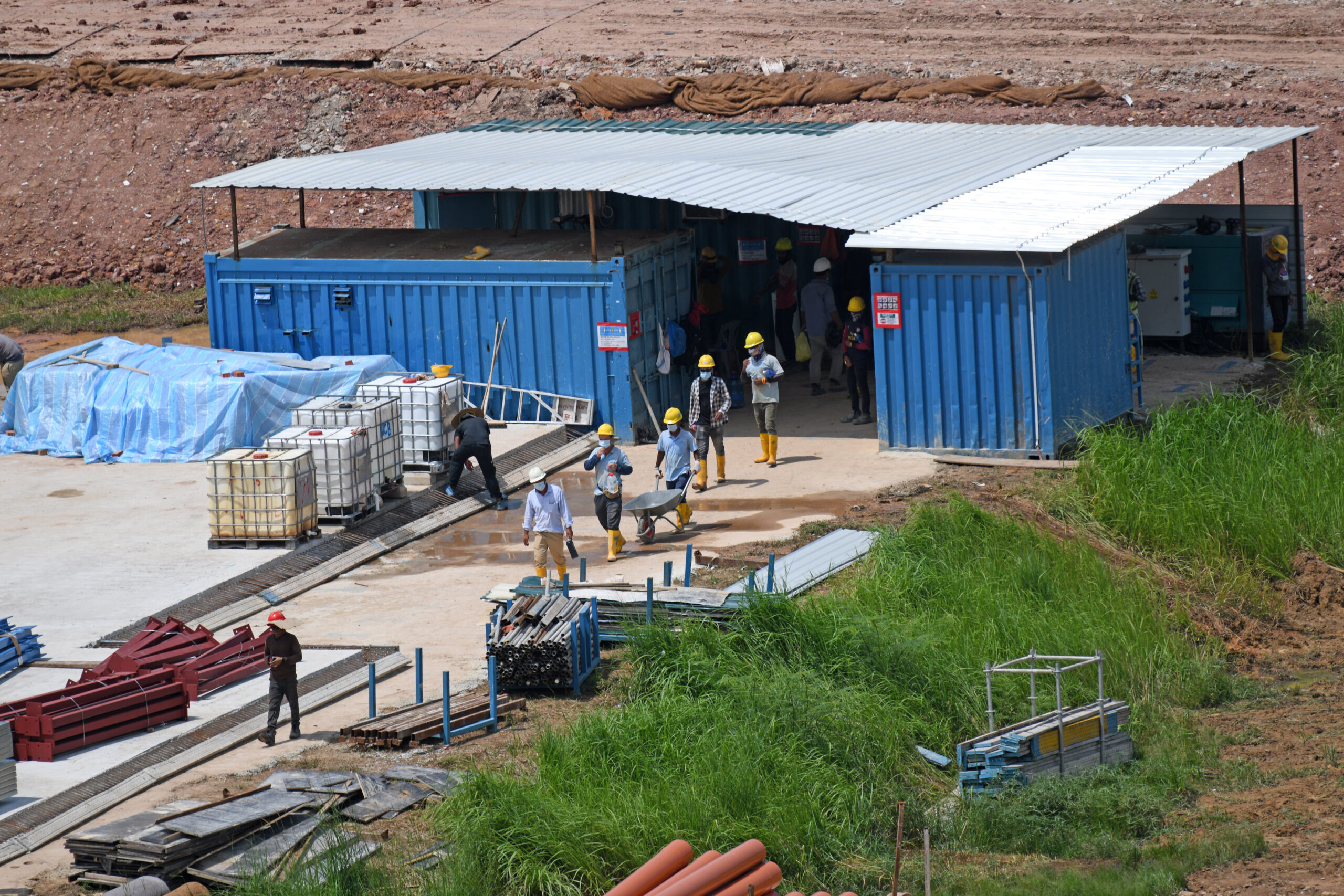
While official figures are not disclosed, Mohsin estimates that around 85% of the approximately 400,000 migrant workers in Singapore at that time lived in dormitories.
But some non-profit organisations focusing on migrant workers’ wellbeing feel the changes ironically served to heighten the distance between migrant workers and the local population and leave them further isolated.
“The new dormitories and recreation centres that have been built since the riots have been “self-contained”, which may cause segregation from the larger local community,” a spokesperson from the Singapore-based charity, Humanitarian Organization for Migration Economics (HOME) told the Globe.
The dangers of these initiatives were intensified when the Covid-19 virus tore through cramped dormitories housing around up to 20 residents in a single room. Migrant workers accounted for around 90% of Covid cases during 2020.
A government statement the following year announced the introduction of new ‘Quick Build Dormitories’, which included improved living conditions such as ensuite bathrooms and a cap of 12 people to a bedroom. An expansion of the Foreign Employees Dormitory Act (FEDA) set to kick in from 1 April 2023, will also subject all dormitories of seven or more beds to higher standards of governance and regulation when it comes to sanitation, security and provision of facilities. Currently, only dorms of over 1,000 are subject to FEDA regulations.
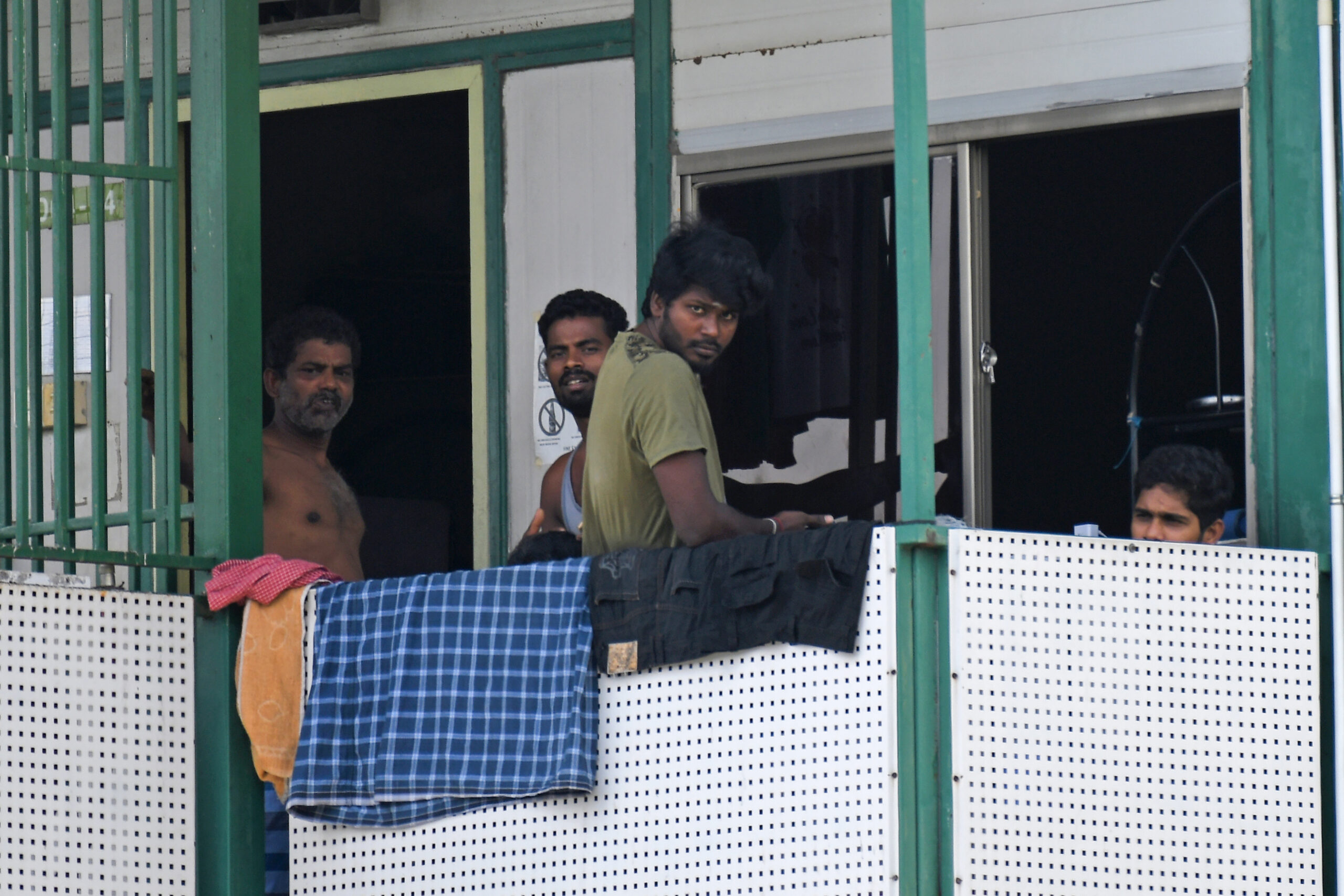
But concerns remain over the hazards that may thrive unregulated in unregistered dorms. In January, the operator of an illegal sublet dormitory was charged after the building caught fire, killing two migrant workers in 2015.
The HOME spokesperson also warned that improvements do not address underlying, more urgent problems.
“While changes were made to migrant worker housing… many fundamental issues plaguing migrant workers’ work conditions remain, such as job precarity, and high recruitment fees,” they said. “Work passes of migrant workers can also be unilaterally revoked, as happened with some workers involved in the riots.”
27-year-old Hasan was in the middle of his ten-hour shift for Chinese steel fabricator Leong Siew Weng Engineering when the piece of metal he was welding slipped and crushed his leg in September 2021, causing him to fall awkwardly and tear a ligament. Long waiting times for an operation have put him out of work for over a year.
“In Singapore, the bosses need to earn, they don’t care about you, how you makan (eat), your housing, your treatment,” he said. “It is very bad if you have an accident.
Leong Siew Weng Engineering did not respond to Globe’s request for comment.
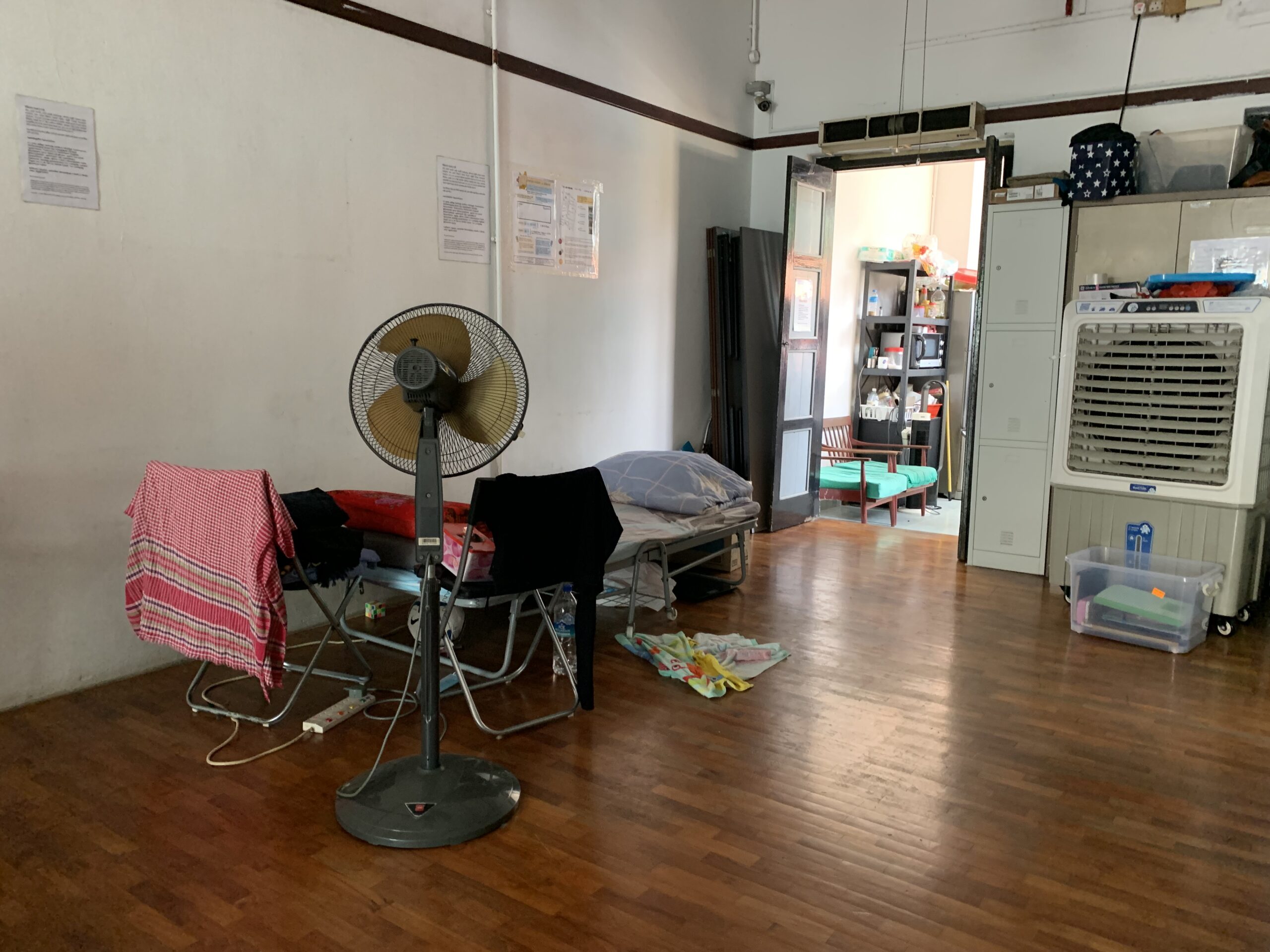
Under the Ministry of Manpower’s Employment Act, migrant workers on employment passes or work permits are entitled to overtime, annual rest days and sick leave, including paid hospitalisation leave. But when Hasan was injured, his company revoked his work pass entirely.
According to Debbie Fordyce, president at Transient Workers Count too (TWC2), a non-profit organisation dedicated to improving conditions for low-wage migrant workers, many still face exploitation and unfair treatment when they succumb to the hazards of their high-risk manual labour.
She said that while migrants do receive a medical leave stipend of around two thirds of their average monthly income, or about $592.32 (SGD 800) and accommodation costs coverage, salary is not included , and a place is opened up to hire a new, more fit recruit.
“[in Singapore’s] work permit system [a migrant worker] is somewhat tied to a single employer, and that employer can fire at will,” Fordyce said.
While on medical leave, some employers serve edicts, restricting workers to their compounds, she added.
“There is a lot of talk about the improved conditions of the dorms, but it’s freedom from the dorms that is the problem,” she said. “There are still gantries, there is still surveillance… The dormitories are a prison.”
Hossain found himself in a similar situation to Hasan when a piece of cement he was drilling into ricocheted under his protective goggles and lodged itself in his eye. The accident has put a halt to his main purpose in Singapore: to send money to relatives back home.
There are still gantries, there is still surveillance… The dormitories are a prison.”
Debbie Fordyce, president, Transient Workers Count too (TWC2)
“I come to Singapore to send money to my family [in Bangladesh],” he said. “Now, three months, I give no money, not even one dollar. My family has many problems coming.”
Both Hasan and Hosain have been issued temporary visas by the MOM, which allow them to stay in Singapore, which they renew in person every 14 days. Every fortnight they will be deported, with no obvious means to repay the hefty bank loans they took out to relocate to Singapore.
“When I paid 7,000 Singapore [dollars] to my [relocation] agent, I think I am coming [for] one year working, two year working, I pay back, I go back to my family,” Hossain said. “Now I [am] injured, I go back to Bangladesh, I die. Police will catch me.”
Over the past decade, government initiatives have shifted further towards support for migrant workers’ wellbeing. All new non-Malaysian migrant workers in the manufacturing, construction, marine shipyard and process sectors are invited to a one-day settling-in programme, geared towards helping employees build relationships with local communities and educating them about their basic labour rights.
In October, the ministry announced measures to improve transport safety for migrant workers. From January 2023, drivers of the buses and lorries that ferry workers between their work sites and dormitories will be required to take a mandatory 30 minute rest period every six hours. A “vehicle buddy” will also be employed to check on drivers’ alertness.
But both Fordyce and Moshin believe that the initiatives only go so far in tackling the underlying divisions.
“There are still long[standing] efforts to segregate foreigners from society,” Fordyce said.
Mohsin believes greater visibility can help build connections. He set up Banglar Kathar in 2006, because he felt that the migrant community “must have a spokesman… a platform to express their view.”
“[We want] to change the local people’s mindset,” Mohsin said. “Migrant workers are human beings, they come here to feed their families. They’re not hungry for your country or your society. Only by changing this [mindset] can we help change people’s minds.”


